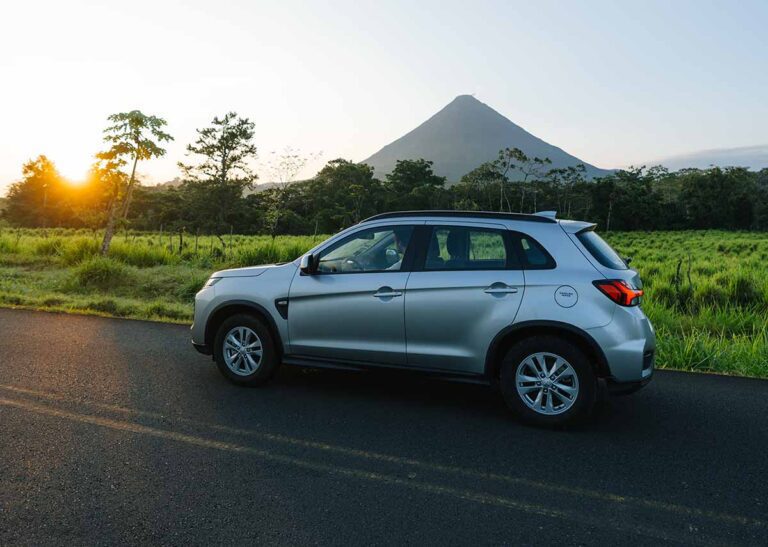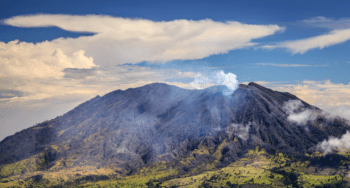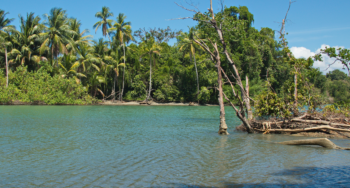Costa Rica Car Rental Guide: What's Covered
Costa Rica’s rental vehicle choice depends on destinations and seasons—economy cars work for San José and major beach towns like Jacó during the dry season, while 4x4s unlock destinations like Monteverde, the southern Nicoya Peninsula, and the Osa Peninsula. The green season (May-November) transforms secondary roads into 4×4-only terrain after afternoon rains. Mandatory insurance costs $15-25/day regardless of credit card coverage.
Quick Facts:
- 4×4 required for Monteverde, Santa Teresa, Montezuma, and mountain eco-lodges year-round
- Guanacaste beaches like Tamarindo are accessible with economy cars; remote beaches need a 4×4
- Book 3-4 months ahead for peak season (December-April) 4x4s; 1-2 months for green season
- Flying into Liberia (LIR) for Guanacaste eliminates mountain driving from SJO
- Valid home driver’s license sufficient—international permit not required for 90-day stays
Top 5 Vehicle-Destination Matches:
- Economy Car – Central Valley, Manuel Antonio, Jacó, major Guanacaste beaches during the dry season
- Mid-Size SUV – Mixed pavement/gravel routes, dry season national parks, better luggage space than economy
- 4×4 Essential – Monteverde, Santa Teresa, Corcovado, remote Caribbean beaches, any green season mountain travel
- 4×4 Smart Choice – Arenal/La Fortuna eco-lodges, rural hot springs, adventure activity pickups
- Season-Dependent – Central Pacific side roads are passable with an economy in the dry season; require a 4×4 in the green season
If you need help choosing the right vehicle for your Costa Rica itinerary, contact us now!
After helping thousands of travelers navigate Costa Rica’s diverse landscapes over the years, I can tell you that choosing the right rental vehicle makes the difference between a smooth adventure and a frustrating struggle with impassable roads. The compact car that works perfectly for your European city break won’t get you to that hidden waterfall in Monteverde or the remote beach in Santa Teresa.
Costa Rica’s terrain changes dramatically within short distances — you might start your day on smooth highways in the Central Valley and end it navigating a rocky creek bed to reach an eco-lodge. Understanding which vehicle matches your specific itinerary prevents both overspending on unnecessary 4×4 capabilities and getting stuck on a mountain road with inadequate clearance.
This guide breaks down exactly which vehicle you need based on where you’re going, when you’re traveling, and what you want to experience. We’ll skip the generic rental car advice and focus on the real-world conditions you’ll face driving in Costa Rica.

What's Really Going on With Costa Rica's Roads?
Costa Rica’s road system reflects the country’s geography — a mountainous spine running north to south with coastal plains on both sides. What looks like a short 50-kilometer drive on a map can take 3 hours through winding mountain passes.
The country has three types of roads that determine your vehicle needs. Main highways connect major cities and tourist destinations with generally good pavement, though potholes appear regularly even on primary routes. Secondary roads serve smaller towns and many popular destinations, with conditions varying from decent pavement to rough gravel depending on recent maintenance and weather. Tertiary roads access remote beaches, eco-lodges, and authentic rural experiences — these often require 4×4 capability.
How Does Weather Change Everything?
Seasonal considerations significantly impact road conditions. During the dry season (December-April), most roads remain passable with standard vehicles. Green season (May-November) transforms many secondary and tertiary routes into challenging 4×4-only terrain, especially after heavy afternoon rains.
The elevation changes throughout Costa Rica create another variable. Coastal routes at sea level face different challenges than mountain roads reaching 3,000+ meters elevation. Understanding these patterns helps you choose appropriate vehicles for your specific route.
Which Vehicle Categories Work Where?
Economy/Compact Cars: Should You Even Consider Them?
Economy cars work well for specific Costa Rica experiences, but their limitations are important to understand. These vehicles excel in the Central Valley, connecting San José to nearby attractions like coffee plantations, Poás Volcano (via paved road), and Cartago.
Where economy cars actually work:
- San José to Alajuela airport area
- Central Valley coffee tours
- Major beach towns like Jacó and Manuel Antonio via main highways
- Paved sections of the Central Pacific coast
- Well-maintained routes during dry season
Where they’ll leave you stuck:
- Monteverde Cloud Forest (steep, unpaved final approach)
- Remote beaches on Nicoya Peninsula
- Most mountain eco-lodges
- Rural areas during green season
If your entire trip focuses on easily accessible destinations and you’re visiting during dry season, an economy car saves money while meeting your needs. However, most first-time Costa Rica visitors want to experience diverse landscapes that require more capable vehicles.
Mid-Size SUVs: Are They Worth the Compromise?
Mid-size SUVs offer more capability than economy cars while remaining more fuel-efficient than full 4x4s. These vehicles handle moderate elevation changes and some unpaved roads, making them suitable for many popular tourist routes.
Perfect scenarios for mid-size SUVs:
- Combination trips including beaches and some mountain destinations
- Dry season travel to most national parks
- Routes with mixed pavement and light gravel roads
- Travelers prioritizing fuel economy over maximum capability
- Groups needing more luggage space than economy cars provide
When they fall short:
- Steep mountain approaches may challenge underpowered engines
- Limited ground clearance for rough roads
- Two-wheel drive limits traction in muddy conditions
- May struggle with fully loaded vehicle on sustained climbs
Mid-size SUVs work well for travelers who want some additional capability without the cost and fuel consumption of full 4×4 vehicles, particularly during dry season.
4×4 Vehicles: Do You Really Need One?
Four-wheel drive vehicles unlock Costa Rica’s most spectacular destinations. Beyond the obvious traction benefits, these vehicles typically offer higher ground clearance, more robust construction, and better approach angles for challenging terrain.
Non-negotiable 4×4 territory:
- Monteverde Cloud Forest (especially during green season)
- Santa Teresa and Montezuma (southern Nicoya Peninsula)
- Most Pacific coast beaches south of Manuel Antonio
- Corcovado National Park area (Osa Peninsula)
- Remote eco-lodges in mountain regions
- Any travel during green season to mountainous areas
Why 4x4s earn their keep:
- Higher ground clearance prevents damage from rocks and ruts
- Improved approach and departure angles for steep inclines
- Stronger suspension systems for rough roads
- Better engine cooling for sustained mountain driving
- Increased confidence on unfamiliar terrain
The additional rental cost for 4×4 capability is typically modest compared to economy cars – often less than what you’d spend on a single shuttle trip between destinations. For most Costa Rica itineraries that include diverse destinations, this upgrade pays for itself in accessibility and peace of mind.
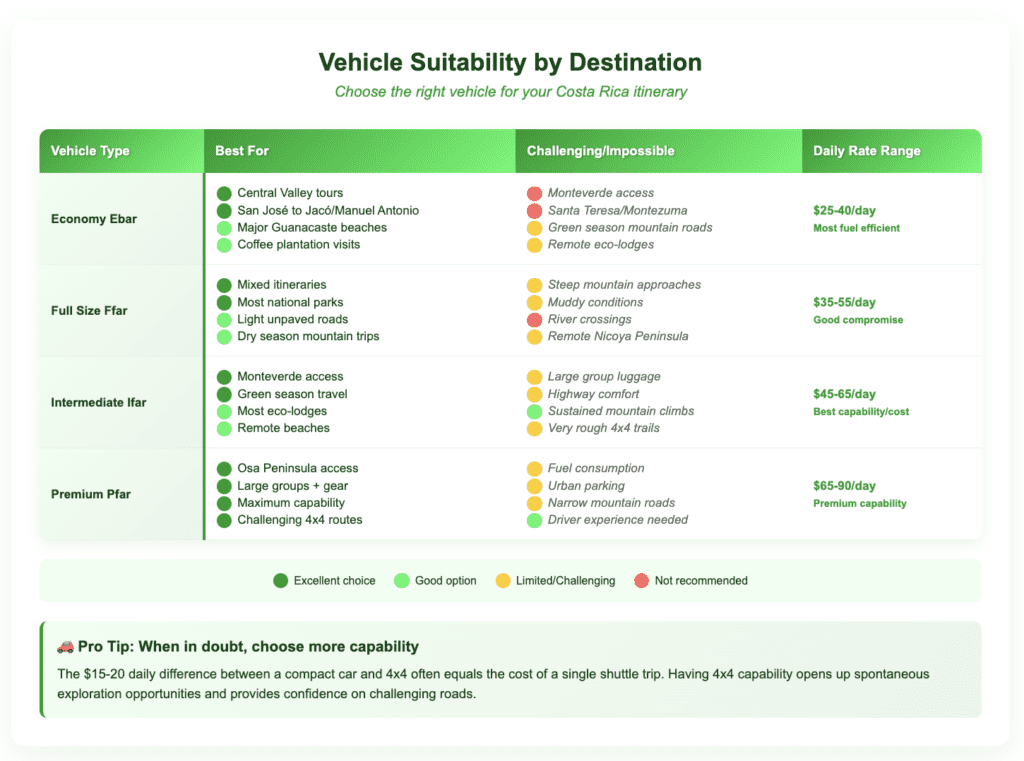
What Does Each Region Actually Require?
Central Valley & San José: Can You Get By With Basic?
The Central Valley’s well-developed infrastructure makes it accessible with any vehicle type. However, elevation changes and occasional unpaved sections to specific attractions influence vehicle choice.
Standard cars handle these just fine:
- Downtown San José
- Airport connections
- Major coffee plantations
- Poás Volcano via main route
- Irazú Volcano
- Most Central Valley hotels
Why you might want SUV/4×4 anyway:
- Braulio Carrillo National Park back roads
- Boutique mountain lodges
- Any rural coffee farms reached by dirt roads
The Central Valley serves as an excellent starting point for multi-region trips. Many travelers rent vehicles here before heading to more challenging destinations.
Northern Plains (Arenal/La Fortuna): What’s the Real Deal?
The Arenal region’s tourism development has improved road access, but several factors influence vehicle choice. The main route from San José to La Fortuna remains paved, while many attractions and accommodations require additional capability.
Economy cars can reach:
- Main La Fortuna town
- Tabacón Hot Springs
- Major hotel chains on paved roads
- Main Arenal Volcano National Park entrance
Where 4×4 makes sense:
- La Fortuna Waterfall (steep descent)
- Many eco-lodges
- Arenal Observatory Lodge
- Rural hot springs
- Any adventure activity pick-up points
During the green season, afternoon rains can make even paved roads challenging due to reduced visibility and slippery conditions. The extra weight and traction of 4×4 vehicles provide significant safety advantages.
Guanacaste & Northern Pacific: Is This the Easy Region?
Guanacaste’s flat terrain and tourism development create the most rental-car-friendly region in Costa Rica. However, specific beach destinations and remote areas still require careful vehicle selection.
Standard vehicles work perfectly for:
- Main beach towns (Tamarindo, Flamingo, Conchal)
- Papagayo Peninsula resorts
- Liberia city
- Major national parks like Santa Rosa
- Well-developed resort areas
When 4×4 pays off:
- Remote beaches
- Dry season exploration of backcountry areas
- Access to some boutique hotels
- Any wet season travel when roads become muddy
Guanacaste’s dry climate means road conditions remain relatively stable year-round compared to mountainous regions. This makes it an ideal destination for travelers preferring standard vehicles.
Central Pacific Coast: How Much Adventure Do You Want?
The Central Pacific balances accessibility with adventure opportunities. Main destinations remain reachable with standard vehicles, while spectacular side trips require more capability.
Economy cars easily handle:
- Jacó to Manuel Antonio via coastal highway
- Major Manuel Antonio hotels
- Main national park entrance
- Established beach towns
4×4 unlocks these gems:
- Nauyaca Waterfalls
- Remote beaches south of Manuel Antonio
- Mountain eco-lodges in the region
- Optimal flexibility during green season
The proximity to San José makes the Central Pacific ideal for testing comfort levels with Costa Rican driving before attempting more challenging regions.
Monteverde Cloud Forest: Why Does Everyone Struggle Here?
Monteverde represents Costa Rica’s most notorious rental car challenge. The final approach involves steep, unpaved roads with sharp curves and significant elevation gain — conditions that eliminate most standard vehicles.
Bottom line: High-clearance 4×4 with good traction control is your minimum requirement. Even experienced drivers find this route challenging, particularly during green season when roads become muddy and visibility drops due to fog.
Real talk: If you’re uncomfortable with challenging mountain driving, consider shuttle services to Monteverde and rent a vehicle for other portions of your trip. The 3.5-hour drive from San José includes 45 minutes of difficult mountain roads that stress both vehicles and drivers.
Many visitors underestimate Monteverde’s access difficulty. Planning alternative transportation for this destination while using rental cars elsewhere often provides the best balance of flexibility and stress reduction.
Caribbean Coast: What’s Different Over There?
The Caribbean coast’s unique challenges include unpaved sections and different rainfall patterns that affect road conditions year-round.
Standard vehicles manage:
- Main route to Puerto Viejo
- Established hotels along primary coastal road
- Dry season travel to major destinations
4×4 becomes essential for:
- Many beach access roads
- Any travel during heavy rainfall periods
The Caribbean’s September-October dry period creates optimal conditions for exploring with standard vehicles, while other months may require 4×4 capability even for seemingly accessible destinations.
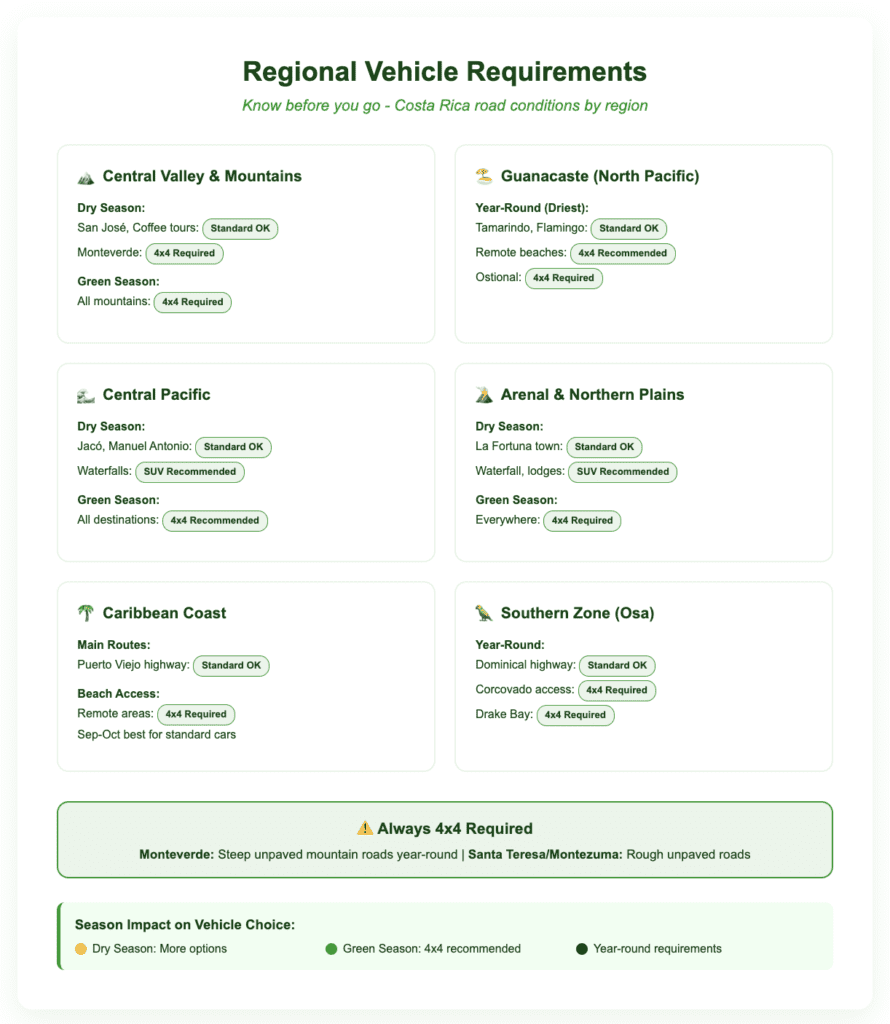
How Do You Actually Decide?
Should You Map Every Single Stop?
Start by mapping your planned destinations, not just the major stops but also day trips and specific accommodations. A hotel located “near Manuel Antonio” might require a 30-minute drive on unpaved roads despite being close to a major destination.
Critical questions to answer:
- Are any destinations specifically noted as requiring 4×4 access?
- Does your accommodation provide specific vehicle recommendations?
- What time of year are you visiting, and how does this affect road conditions?
- Do you plan spontaneous exploration or strictly planned activities?
What’s Your Real Comfort Level?
Costa Rican driving differs significantly from North American or European conditions. Narrow roads, aggressive local driving habits, limited signage, and wildlife crossings create challenges regardless of vehicle type.
Honest self-assessment points:
- Experience with mountain driving and manual transmissions
- Comfort level with navigating using landmarks rather than street addresses
- Ability to adapt plans when road conditions prevent access
- Confidence handling larger vehicles in challenging conditions
Some travelers prefer the security of 4×4 capability even for accessible destinations, while others prioritize fuel economy and rental costs for simpler itineraries.
What’s This Really Going to Cost?
Vehicle choice significantly impacts total trip costs beyond daily rental rates. Consider fuel consumption, insurance requirements, potential damage costs, and accessibility to your planned experiences.
Real cost calculations:
- Daily rental rate differences between vehicle categories
- Fuel efficiency impact on longer trips
- Insurance deductibles and coverage options
- Potential costs of inability to reach planned destinations
- Alternative transportation costs (shuttles, tours) if choosing limited vehicles
The price difference between economy cars and 4x4s often equals 2-3 shuttle trips, making rental vehicles cost-effective for multi-destination itineraries even when factoring higher daily rates.
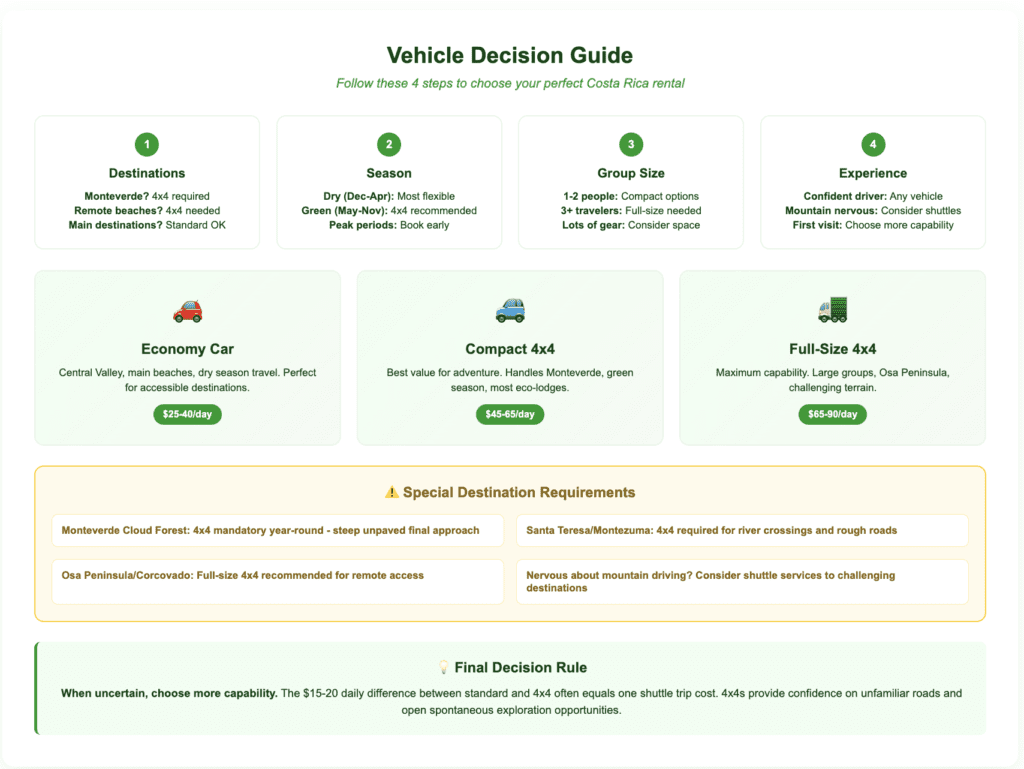
What About Insurance and Legal Stuff?
What Coverage Can’t You Skip?
Costa Rica requires minimum liability insurance regardless of personal coverage or credit card benefits. This “Seguro Obligatorio” cannot be waived and typically costs $15-25 per day depending on vehicle type.
Non-negotiable insurance facts:
- Covers damage to other vehicles and property
- Does not cover damage to your rental vehicle
- Required by law with no exceptions
- Included in quoted rates from reputable companies
Which Extra Protection Makes Sense?
Beyond mandatory coverage, rental companies offer additional protection that can significantly impact your financial exposure.
Collision Damage Waiver (CDW): Reduces your liability for damage to the rental vehicle. Deductibles typically range from $750-1,500 depending on vehicle type and coverage level.
Theft Protection: Covers vehicle theft, which can occur in tourist areas. This protection becomes more valuable for expensive 4×4 vehicles.
Personal Effects Coverage: Protects belongings stolen from the vehicle. Standard travel insurance may provide similar coverage.
At Vamos Rent-A-Car, we provide transparent insurance information during booking, helping you understand exactly what’s covered and what optional protection makes sense for your specific trip.
When Should You Actually Book?
How Far Ahead Is Far Enough?
Costa Rica’s peak season (December-April) creates significant vehicle shortages, particularly for 4x4s. Popular destinations like Manuel Antonio and Arenal often see complete sellouts during Christmas and Easter weeks.
Realistic booking timelines:
- Peak season: 3-4 months advance booking
- Green season: 1-2 months typically sufficient
- Holiday periods: Book immediately upon trip planning
Vehicle category availability varies significantly, with economy cars generally available with shorter notice while 4x4s require more planning.
Airport or City Pick-up: Does It Matter?
Most major rental companies operate from both international airports (SJO and LIR), but vehicle selection and pricing can differ significantly between locations.
What changes with location:
- Airport pick-up provides immediate access upon arrival
- City locations may offer better vehicle selection
- Different locations may have varying rates for identical vehicles
- One-way rentals between airports incur additional fees
Consider your arrival airport when planning vehicle needs. Flying into Liberia (LIR) for Guanacaste destinations eliminates challenging Central Valley mountain driving while providing immediate access to 4×4-friendly terrain.
What Do You Actually Need to Rent?
Which Documents Are Required?
Costa Rica accepts valid driver’s licenses from most countries for tourism visits under 90 days. International driving permits aren’t required but can be helpful for police interactions.
Bring these essentials:
- Valid driver’s license from home country
- Passport for identification
- Major credit card for security deposit
- Rental confirmation and insurance details
How Should You Inspect Your Vehicle?
Costa Rica’s challenging road conditions make thorough vehicle inspection crucial before departure. Document existing damage to avoid disputes upon return.
Don’t skip these checks:
- Photograph and/or video all existing scratches, dents, and tire condition
- Test air conditioning, lights, and windshield wipers
- Verify spare tire condition and location of tools
- Confirm GPS functionality or obtain offline maps
- Check fluid levels and tire pressure
- Note gas tank level to return with same
How Do You Navigate Without Street Signs?
Costa Rica’s limited road signage and landmark-based addresses require different navigation approaches than many travelers expect.
Navigation survival tips:
- Download offline maps before departing (Waze works well in Costa Rica)
- Plan routes during daylight hours when possible
- Allow extra time for all journeys, especially during green season
- Identify fuel stations along planned routes
- Have accommodation contact information readily available
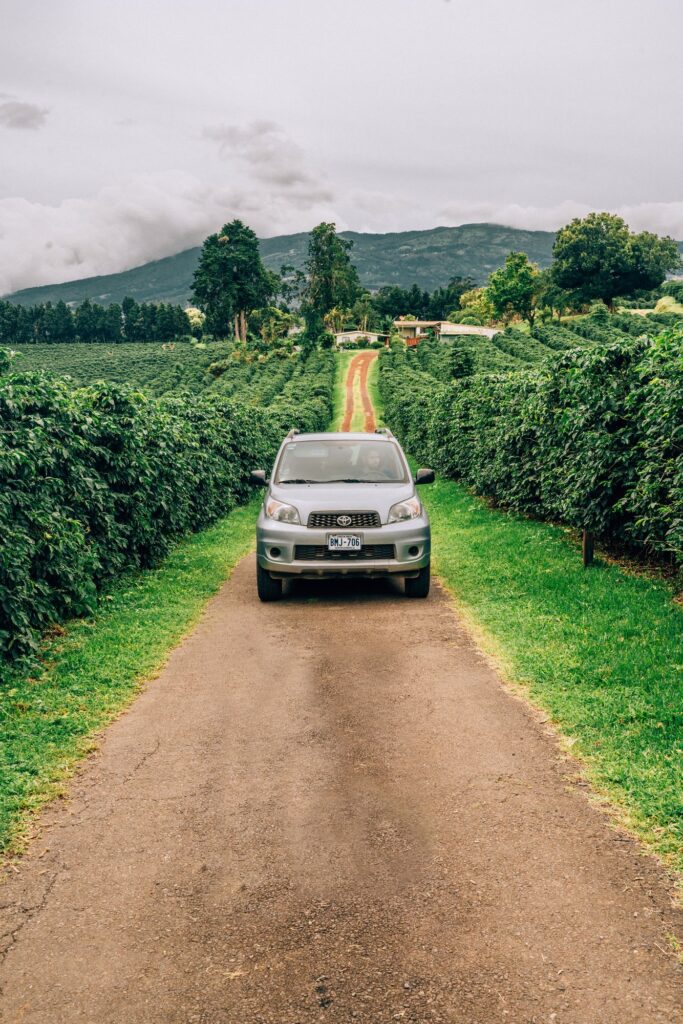
What Mistakes Will Ruin Your Trip?
Why Do People Get Stuck in Monteverde?
Many travelers choose economy cars thinking they can reach major destinations like Monteverde or remote beaches. This often results in abandoned itinerary plans or expensive emergency shuttle arrangements.
Reality check: If your planned destinations include any location described as requiring “careful driving” or “high clearance recommended,” choose 4×4 capability.
Are You Really That Good a Driver?
Confident drivers from flat, well-signed road systems may initially struggle with Costa Rica’s defensive driving, mountain roads, and landmark navigation even with appropriate vehicles.
Practical approach: Consider your actual comfort level with challenging driving conditions, not just your general driving ability. Shuttle services for specific challenging routes while renting cars for other portions often provides optimal flexibility.
What Happens When the Rains Come?
Road conditions change dramatically with rainfall. Routes accessible with standard vehicles during the dry season may become impassable without 4×4 capability during the green season.
Planning solution: Research specific road conditions for your travel dates, not general destination accessibility. Local rental agencies provide current road condition updates that help inform vehicle choice.
Ready to Lock in Your Decision?
Choose your rental vehicle based on your specific itinerary, not general Costa Rica recommendations. A beach-focused Guanacaste trip requires different capability than an adventure-focused multi-region exploration.
Priority checklist for deciding:
- Specific destinations and accommodation access requirements
- Travel season and expected road conditions
- Your comfort level with challenging driving conditions
- Budget considerations including rental rates and fuel costs
- Group size and luggage requirements
If you’re uncertain about vehicle requirements, choose more capability rather than less. The additional daily cost of 4×4 capability often proves minimal compared to alternative transportation costs when standard vehicles can’t access planned destinations.
What's Your Next Move?
Ready to explore Costa Rica with the right vehicle for your adventure? Here’s how to move forward:
Get started now:
- Map your specific destinations including exact accommodations and planned activities
- Check current road conditions for your travel dates through local sources
- Calculate total costs including rental rates, fuel, and insurance for different vehicle categories
- Book early especially for peak season travel and 4×4 requirements
Need specific advice? At Vamos Rent-A-Car, our local experts provide personalized vehicle recommendations based on your specific itinerary. We know which roads challenge standard vehicles and can suggest optimal routes for your chosen vehicle category. Our airport locations at both SJO and LIR provide immediate access to your perfect Costa Rica adventure vehicle.
Contact us to discuss your planned route and receive specific vehicle recommendations that match your destinations, travel dates, and comfort level. With proper vehicle selection, you’ll spend your time enjoying Costa Rica’s incredible diversity instead of worrying about road accessibility.
¡Pura vida and safe travels!
